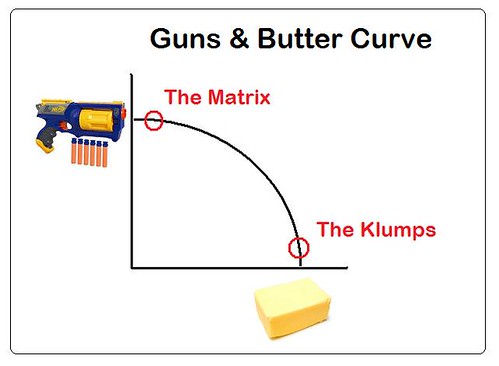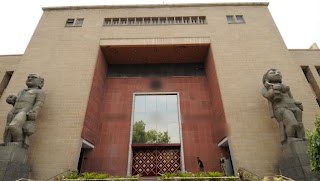 |
| Who will be the PM? |
For a man, whom many see as Congress’s possible Prime Ministerial candidate next year, finance minister Palaniappan Chidambaram’s 8th budget was without what markets call the wow factor – nothing to perk up business, nothing much to make the middle class voters happier.
 However, as in any pre-election year budgets, Chidambaram’s budget will try to spend its way out of the mess the Indian economy is in, by splurging on an all time record budget of Rs 16.65 lakh crore, a 16.5 per cent increase over the current year’s spending. In dollar terms India’s budget spend of $ 314 billion equals one and a half times’the entire economy of neighbouring Pakistan.
However, as in any pre-election year budgets, Chidambaram’s budget will try to spend its way out of the mess the Indian economy is in, by splurging on an all time record budget of Rs 16.65 lakh crore, a 16.5 per cent increase over the current year’s spending. In dollar terms India’s budget spend of $ 314 billion equals one and a half times’the entire economy of neighbouring Pakistan.
India is expected to grow by 5 per cent this fiscal year, far lower than the 8-9 per cent GDP growth it posted for most of the last ten years. GDP figures released today for the October-December 2012 quarter were a dismal 4.5 per cent, putting pressure on the government to opt for aq tough budget which aims to grow the economy “out of the trough”. Chidambaram in his budget speech, underlined his plan as one of “unhesitatingly embrac(ing) growth as the highest goal” to manage what he termed as “challenged” Indian economy.
 |
| India's Rich will have to pay more tax |
New taxes including a `Super Rich’ surcharge on individuals earning more than Rs 1 crore ($185,000) a year and firms earning more than Rs 10 crore ($1.85 million), applied in token deference to an idea floated by Left-wing economist Joseph Stiglitz and nearer home by India’s leading philanthropist Azim Premji, and higher revenues churned out by an economy which the government hopes will grow at a faster pace of over 6 per cent are expected to fund the splurge. As also a record borrowing plan which hopes to raise Rs 5.42 lakh crore from the market.
There were however prudent cues to satisfy global credit rating agencies such as Moody’s and Standard & Poor, who had been threatening to downgrade the slowing down Indian economy beset with widening fiscal deficit, widening trade deficit and falling rupee.
 |
| India wants more butter now |
Spending on non-economic activities such as defence will be kept down. For the first time in years, increase in defence spending was kept at just 5 per cent. Defence spending went up to Rs 2.03 lakh crore or $ 38 billion (for comparisons, a fifth of Pakistan's economy), from the Rs.1.93 lakh crore outlay for 2012-13.
However, the lack of any specific spark in the budget and higher taxes on corporates and MNCs left Chidambaram's cheer-boys in India Inc, not so happy, which they made clear in interviews on television channels. Bombay Stock market's Sensex fell 1.52 per cent or by 290 points. Markets seemed to have been spooked by the finance minister’s clarificatory amendment introduced as part of the budget, that residency would not be enough to get the benefit of double tax avoidance treaties with tax havens like Mauritius to avoid paying tax in India. Businesses and investors in India would also have to prove that beneficiaries of the investment funds were residents of the tax havens. (Something he said would be addressed the very next day, leading to a modest claw-back in the BSE )
 |
| Sensex went down after the budget |
India’s leading commodity market, MCX, too reacted negatively to a 0.1 per cent Commodity Transaction Tax, re-introduced after being brought in and rolled back 4 years back, on non-farm products. The metals index went down by 0.3 per cent. Interestingly, perhaps fearing calls for a similar roll-back, the finance ministry has however not budgeted for any tax earnings from this score.
Bringing in more taxes home, is very much part of Chidambaram’s growth plan with revenues expected to grow by 19 per cent, with services tax being most buoyant, growing at 35.7 per cent, possibly on the back of a tax amnesty announced for those evading service tax.
The government is also betting on more disinvestment earnings. Against this year’s Rs 24,000 crore expected to be realised from disinvestment, the government hopes to earn a a specific rs 55,814 crore from share sales this year, including possibly from selling the government’s rump stake in Hindustan Zinc Ltd. Similarly the government has set an ambitious target of raising Rs 40,000 crore from telecom spectrum auctions and one time spectrum fee despite spectrum auctions having been a flop this year.
 |
| Road Eastwards |
To spur investment, the Harvard educated, right-wing finance minister announced that plan spending on large public investments on highways, railways, ports, airports, power transmission lines etc., will be raised to Rs 55.5 lakh crore from Rs 42.91 lakh crore spent this year, an increase of some 29 per cent on actual spending. Firms investing more than Rs 100 crore would get 15 per cent extra tax benefits, infrastructure debt funds would be encouraged to fund ambitious long term plans and the World Bank and ADB roped in to help build an expressway linking India’s North east with Myanmar and thence on to Thailand, Malaysia and Singapore, India’s big markets in the Asean.
Two new industrial corridors or expressways with industrial zones on either sides, one linking Bangalore with Chennai and another Bangalore with Mumbai, and new mega ports at Sagar in West Bengal and Andhra Pradesh were also among projects with which Chidambaram hopes to spur growth.
The bet will however be on growth and if that does not come about then Chidambaram’s gamble of higher revenue earnings could well fall by the way and the man who gave dream budgets to India Inc., some years back could well be the man who scripted a nightmare for the country’s economy already overburdened by high inflation, slack demand and rising debt.







